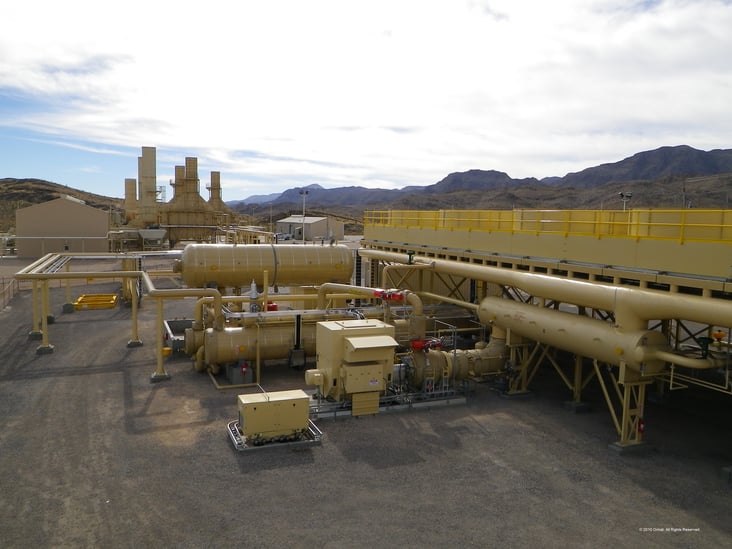
Image courtesy of Ormat.
Waste Energy Recovery (WER) describes any process in which energy that would typically be “thrown away” is captured and put to use. In broad terms, there are three types of waste energy sources suitable for recovery: waste heat, excess pressure in steam and other industrial processes that is normally dissipated, and residual fuel value in industrial process streams (purge gases, off-gases, etc.). WER can be used to generate electricity or to produce thermal energy for industrial processes. Some applications of WER are similar to combined heat and power (CHP), except that instead of the fuel used by CHP systems, WER uses recovered energy that is otherwise considered waste.
Some examples of WER that generate electricity include waste heat recovery (WHR) from industrial processes and boilers; WHR from mainline natural gas pipeline compressor stations; pressure recovery from industrial steam use; pressure recovery from non-steam, high-pressure industrial processes; and pressure recovery from natural gas pipeline pressure-letdown stations. One example of WER in action is the Port Arthur Steam project in Texas, which uses heat recovered from petroleum coke kilns to produce high-pressure steam. Most of the steam is sold to a neighboring refinery, displacing natural gas use. The rest of the steam is used to produce up to 5 MW of electricity used at the calcining facility. Similarly, Basin Electric Power Cooperative relies on baseload power from WER projects totaling 44 MW in North Dakota, South Dakota, and Montana. Other applications of WER can be found in chemical, petroleum, and forest product industries, drying processes, and metals and mineral manufacturing.
With the industrial sector accounting for approximately one-third of all energy used in the United States, there is ample opportunity for WER to reduce energy usage. In industrial processes, 20% to 50% of the energy is ultimately lost as waste. WER can improve efficiency of industrial processes by as much as 10% to 50%, while generating electricity and useful thermal output that can be used onsite. WER displaces the need for purchased fuels and electricity, thus resulting in fuel cost savings while providing industrial end-users with more control over their total energy use.
